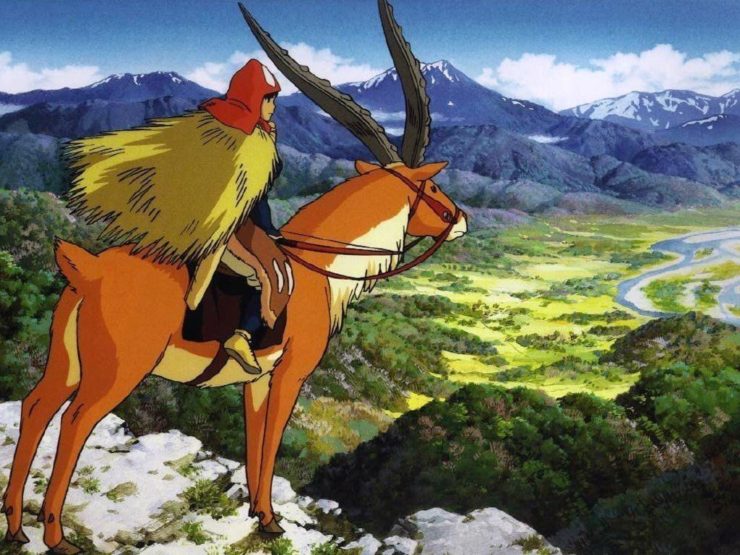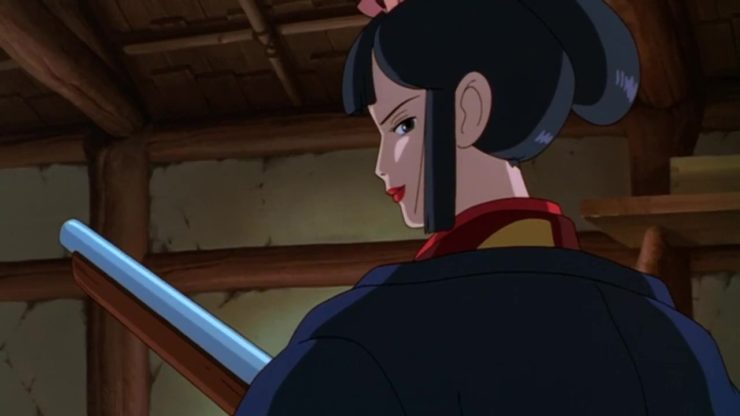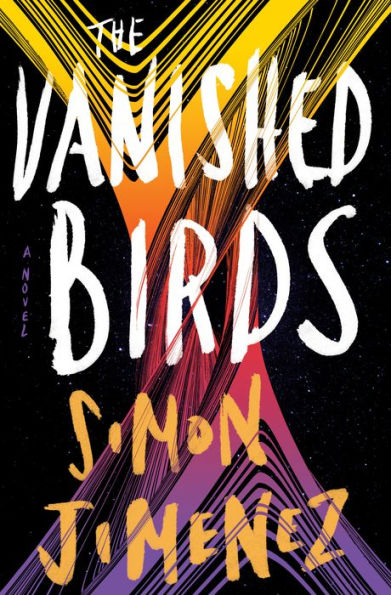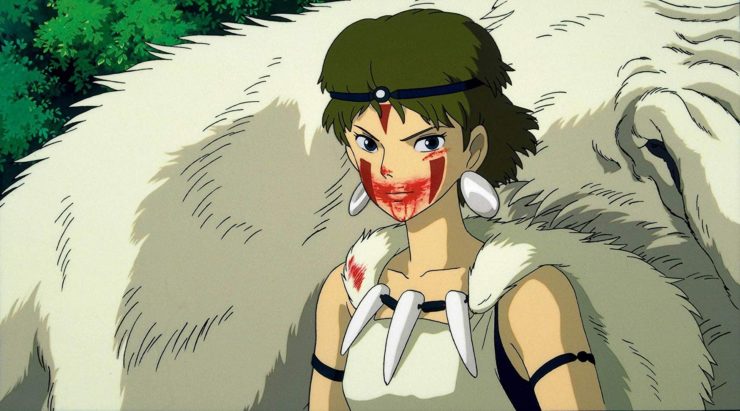Be wary of those who fetishize the difficulties of their own creative process. One does not need to shirk the healthy levels of their own emotional and physical well-being to make a work that would add meaning and clarity to the world. The human life is composed of such limited currency. Spend it wisely, and in pursuit of a balance of passions.
Take care of yourself.
Such is the contemporary wisdom on work ethic; for the most part a good and healthy redirection of cultural norms. But like any maxim or ideal, it does not apply to all. There are those for whom a life’s balance cannot be struck. Those that, due to whatever mysterious confluence of personal/societal history and chemical composition have created them, for whom work is life. Whether it makes them happy or not. Whether or not they sleep at night satisfied. Their waking moments have been and will continue to be dedicated to that Thing, whatever it may be.
Say it is animation. Say they spent their decades flipping constantly back and forth between three or four translucent pages, while studying the motion of the lines, like a magic trick, or actual magic, for this isn’t pretend, they are giving something life. It is a lifestyle too easy to fetishize. The artist’s monastic subscription to a single cause, for days, and weeks, and years, as their children grow up for the most part without them. Time marching onward, as they wrench themselves from the work desk long after the day has ended, and return in the morning, never missing a day. Their life the route between the house and the office. The pages fluttering beneath their calloused thumb, as a graphite eye slowly opens, and looks back at them.
It is difficult to talk about his work without first talking about the man himself. The image of Hayao Miyazaki is everything. He’s short, with the shuffling walk of a man getting on in his years, his back a bit hunched, one guesses from the long hours spent at the desk. He has a clean swoop of grey-white hair, a boyish cut, like an eagle scout.
He seems to always be wearing an apron.
In interviews, he is thoughtful, precise with his words, and often cutting with his assessments of people, governments, entire generations. There is a sense of impatience about him, as if he knows how little time there is, and how much work he has left to do. The stories about him—the intensity of his dedication, his intuitive genius—while definitely promoted by the studio’s marketing to appeal to a cinephile’s sense of auteur-ship, are no less true. There is only so much one can hide from countless making of documentaries and interviews and anecdotes shared by those with whom he’s worked with.
Miyazaki is as much a cultural export as his films, renowned for his involvement with every part of the film’s creation. He draws the storyboards—the “visual script”—himself, the framing, the dialogue. He oversees every single one of the cels that compose the film and give animation and life to the drawings; somewhere between one and two hundred thousand pages. All of it lovingly, impossibly rendered.
You know a Miyazaki film when you see one. It is in the lush painterly style of the dramatic natural backgrounds that are in total and overwhelming focus. The obsession with the natural elements, like gravity and wind—wind probably his favorite, the particular way it buffets the leafy billows of trees, or uplifts the canvas wings of a handmade aeroplane (he is a self-professed lover of all things flight). It is in the consistent worldview. The realist in him that sees the irreconcilable differences between civilization and the natural world. The virtues of a job well done; of work. Of all artists, there are a surprising number of similarities between him and the American director Michael Mann in this regard. Both of them populating their worlds with hyper-competent characters who are as identified with what they do for work as they are with what they will do for the story. Both take a joy in watching the work get done. The characters work, and they work well. There is an attention to process of their work. A young child expertly working the steam valves of a mine elevator with an oven mitt. An adolescent girl learning how to scrub the grime out of a bathtub for spirits. A warrior slicing arrows out of the sky.
A Miyazaki film is work all over. They are labored over, until every frame represents everything that makes the whole great.
Here’s my favorite.

Princess Mononoke was Miyazaki’s seventh major film. From inception to its 1997 release, Mononoke’s creation was a four-year process, with him as writer and director, alongside a small army of Studio Ghibli’s talented artists at his visionary disposal. It was, at the time, the most successful film release in Japan, until Titanic that same year.
For those who have never seen it, a quick synopsis: Set somewhere around 14th-15th century Japan, a young warrior is cursed while defending his village from a raging demon. His right arm tainted by its touch, the curse presenting itself as a purple-black mark that will slowly spread throughout his body, and then one day kill him. The young man journeys west in search of a possible cure. The journey takes him to the encroaching edge of civilization, where a frontier ironworks town is beset on all sides by various factions who would destroy them: fellow humans, who crave the iron-rich land for themselves, as well as the animals and massive animal gods of the forests who are, to say the least, displeased with how the ironworkers have been treating the land. It is at the heart of this conflict, between humanity and nature, and the mysterious, masked wolf girl Princess Mononoke, where the young man might find his salvation.
It is a story with much packed in, yet it is not overstuffed. A manageable epic. It is possible that some of the nuances of certain factional interests will go unnoticed on the first watch, but the film wisely keeps its main narrative clean with the simple technique of POV, remaining by the young man’s side throughout, with a few justified exceptions. He is the outsider navigating the impossible and possibly irreconcilable conflict at the unpredictable yet eloquently told story’s heart.
And indeed one sees the world by his side, and not, as is the traditional POV, “through his eyes”, for this point speaks to one of Miyazaki’s hallmarks as an artist: his framing of his characters as living within a world greater than themselves. In his films, and Princess Mononoke especially, whose themes demand such attention, the natural background is as “foregrounded” as the characters that walk through it. Close ups are used sparingly. The stars of the show are the exquisite paintings of ancient forests and roiling rivers and rocks with texture and weight that imply the history of erosion and tectonic uplift. Wooden beams bound in loops of rope and which compose the uneven ladders that stretch up to precarious watchtowers that are built to such believable schematics. Drawings of such detail, we understood intuitively, on sight, that this world is real, and populated by people of history, and objects of context.
It is context that gives his work power. A person is as much defined by their actions as they are by the society they live in, and the geographic plane they travel through, or harvest.
Iron Town, the location around which most of the movie’s action pivots, is perhaps the most telling example of such context. It is a town ruled by its industry, the cultivation of iron and the forging of the rifles and ammo that are used to fend off imperial interlopers and clear out the forests of its animals. The iron balls they forge are the reason for the demons that rampage the lands. The destructive influence the place has on the world is at every point made obvious. But it is populated, and run, by the castoffs of society. Former sex workers and lepers, who find home and hearth in service of the powerful, calculating, but never cruel Lady Eboshi, a woman who had to fight—one presumes in the face of great difficulty—for her share of the world.

In a lesser film, Eboshi would be the primary antagonist. Instead she is this: a nuanced symptom of a larger problem, and a terrific character in her own right. Cunning, cold to the needs of the natural world around her, but still laced through with a great empathy for the women and men in her employ. There is a moving scene where, as she shows a wary Ashitaka the inner sanctum of her ironworks fortress, she introduces him to the lepers who design her rifles. An old bandaged man who can no longer lift himself up tells the young man that Eboshi was the only one who would care for them and clean their wounds, and give them work.
One could make the point that Eboshi is exploiting the work of the needy for her own personal gain, and it would be justified (so much of her character remains an unexplained mystery—in a good way—that all manner of motivation could be ascribed to her), but the emotional root of the scene, the truth that Miyazaki is bringing to light, is that in this small warmly lit room where the lepers compose her fine weaponry, they take joy in the identity that the work affords them. They are not only their disease. They are also people who enjoy laughter and camaraderie through the work they share. They make weapons, yes, but more than that, they are designers.
In his explorations of the town, Ashitaka learns that though life is hard on the frontier. The people are happy to work here, both the men who go out to harvest the iron, and the women who work the bellows. They would follow their leader into the heart of any battle. And though the film makes it clear that it is the women especially who are most thankful for their new lot in life, it wisely does not hold their present circumstances in stark contrast with their past; it does not judge them for their previous profession in sex work. Though one of the men of the town disdainfully refers to them as “brothel girls”, the film itself goes out of its way to portray the women as vivacious pragmatists, flirty when they want to be, serious when they need to be; women who, like Eboshi, did what they had to do to survive, and who now enjoy an unprecedented amount of independence under her surveillance.
Like the lepers, they find freedom and identity in their work. In one standout scene early on, Ashitaka, while decompressing from his revelatory talk with Lady Eboshi, walks past the entrance to the ironworks furnace, and sees a group of women working the bellows. There are two rows of women, working alternate sides of the giant pump. They hold onto ropes for support as they press down with their feet, as if they are operating a great flat see-saw, their movements synonymous with the machine. The film pauses here. It observes in silence the work. The focus of the women, and the effort it takes to work in persistent, unending rhythm. This is the heart of the town, Miyazaki is saying. They are what keep the fire going.
Ashitaka approaches the women, and asks if he may join them for a bit. His motivations unspoken, given space by the film to be a multitude of things. He wants to understand what it is they do. How it feels to do it. And against the red fire of the furnace, and the robes loosened to bear its heat, there is also, perhaps, a bit of understated flirting—and some showing off, on Ashitaka’s part, as he undresses and works the pump (and in turn provided a young me a minor moment of sexual awakening).

As he grunts, and sweats, and realizes just how difficult the bellows pump is, the leader of the women explains exactly what it is they do. She acknowledges that the work is hard, but that they are glad to have it, despite efforts, and the absurdly long shifts. After all, she says, with a wry smile, it beats life in the city. They’ve known much worse. They’ve known little better. It is a good life.
By the slow and weighted animation, the gulping and pendulous lift of the bellows pump, it is made explicit how physically punishing the work is. Watching the scene, one wonders how long a body can stand to work the bellows without breaking. But enjoyment or comfort doesn’t seem to be part of the mental equation. The women seem to take pride in the fact that it is for a purpose greater than themselves.
An open question, then, whether Eboshi has in her creation of Iron Town made the best of a bad situation, or made a bad situation worse. The movie perhaps argues that there is more than one truth. To Miyazaki, then, there is a great conflict of living: it is impossible to live gracefully, but nevertheless, one must live. What one chooses to do with that life is the ultimate determination. Where most films would barrel past such moments, Miyazaki’s films linger on the work and its processes. And as much as the director seems to find a quiet dignity in a life lived in service of good work, he makes room yet for criticism; the work always contextualized within the larger structure. The women may find safety and independence in their work, but the work is killing the world. They may find the work grueling, but it affords them a life vastly superior to the one they’d known before—so much so that later on, they are willing to face death, rather than go back to the way things were. The work gives life to the city, but death to the land. There is no easy answer. The film does not pretend to give one, for it is not an essay, but an exploration.
Buy the Book


The Vanished Birds
It is an overwhelming work. But words can only do so much to sell someone on a visual medium. There are YouTube clips I’m sure—a handful, maybe, that have yet to be obliterated by copyright strikes. The most watched of them will probably the opening scene, when Ashitaka battles the demon god, which is as good an example of the film’s absurd quality of animation as any.
The scene ostensibly took two years to compose, and I believe it. Consider the centerpiece: the demon in question a rampaging boar with a body oozing with thousands of writhing black snakes. The snakes are a manifestation of the boar-demon’s rage. They boil and twist and bite, and they shoot up as one into the sky in great black geysers. They bleed onto the ground and wither the grass they fall upon. Watching the scene now, in the haze of my own reflection of my creative process, I wonder at the hours that went into the animations. The ruined eyes and hands of the laborers. The artists who must have burned out from the effort. And I wonder what it takes to make something that is truly great. The recipe. If there is such a thing as a bloodless victory in the creative arena, or if art that staggers and swoons demands more from those who create it; if in searching for the right colors for your paint, you must cut yourself for the red, and self-immolate for the ash; that particular shade of grey.
The making of this film was so difficult Miyazaki wasn’t sure he could make another one. He was sure it would be his last. He has said so in many interviews.
I wonder which of his animators that was actually true for.
I saw Princess Mononoke when I was nine. Needless to say it made an impression on me. Like I was giving witness to someone else’s dreams. Yes, it was awesome. But over the years my relationship with the film has changed, enriched by awareness, and melancholy.
I do not practice what I preach. My life is not one of balance. I do not take care of myself in the ways that I should when it comes to work, though I am learning. And in the “spirit” of the creative process I had ignored so much of my life that it sometimes seems impossible to get much of it back. As I prepare for the publication of my book and start work on my second, armed with the lessons of the past, I wonder about the tradeoffs one makes for the sake of their craft. What is worth losing for the work. I still don’t know. But such uncertainty comes part and parcel with not only this industry, but life as a whole. By the end, no one knows if all their efforts have been properly and fairly repaid. I doubt even Miyazaki at the late stage of his life knows, really knows, regardless of how celebrated his record may be; for he is as human as you or I, and we labor under nothing but our own delusions. So when I watch Princess Mononoke now—or indeed any of his films, though it is this one I think of most—I am moved by not only its aesthetics and its story, both of which I find to this day to be some of the best one will find in cinema, but all the labor that went into the making of it. I am moved by the immensity of the endeavor. Its utter success. This film is, to me, one of the standout examples of what is possible when the masters of their craft are working at the peak of their powers. What is achievable, and what is lost, once all else is whittled away but the work. When all that you are is what you create. And I think of how suddenly we find ourselves living there. That small and mighty town at the edge of the world, at work at its hungry furnace. The flame brightening the night, as it burns down the forest.
But though the land may be cleared it is never dead. We begin again. If he and his work have taught me anything it is the resilience of nature. All of its persistent cycles. The sprouting ready to begin again in time, we hope wiser than before. Perhaps taking months, maybe years to come—no matter. It is inevitable. From the char we will see it.
The stubborn beginnings of the first new tree.
Recommended extras, if you are interested in learning more about the director:
- The documentary The Kingdom of Dreams and Madness, dir. Mami Sunada.
- The 2-hr making-of documentary for Spirited Away
- The sister books Starting Point and Turning Point, trans. Beth Cary and Frederik L. Schodt, which are collections of almost every interview of Miyazaki, and essays he’s written, categorized by his major works filmography, starting, I believe, with Castle of Cagliostro, and ending with Ponyo.
Simon Jimenez’s short fiction has appeared in Canyon Voices and 100 Word Story’s anthology of flash fiction, Nothing Short Of. He received his MFA from Emerson College. The Vanished Birds is his first novel.










